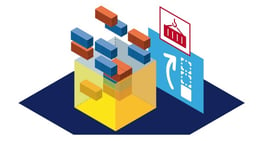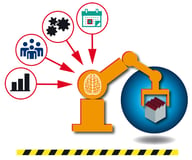On Maximizing Your Transportation Management System
Nick Ostdick - July 05, 2016

 Very few supply chain planners, managers, and analysts would argue against the value added proposition of a transportation management system (TMS) as part of a robust, streamlined planning strategy. And very few people in the supply and demand logistics industry would quibble with the basic pillars of how an integrated TMS functions:
Very few supply chain planners, managers, and analysts would argue against the value added proposition of a transportation management system (TMS) as part of a robust, streamlined planning strategy. And very few people in the supply and demand logistics industry would quibble with the basic pillars of how an integrated TMS functions:
- Enhances the ability to make cost-effective decisions to maximize ROI (return on investment) and customer service.
- Tracks product shipments and generates dynamic reporting on freight efficiency.
- Analyzes inventory and creates accurate forecasts about future demand.
- Engages in sophisticated simulations to best prepare and troubleshoot potential freight disruptions.
But in today’s global supply management landscape, with production hubs and facilities located in disparate parts of the world - and the development of new and emerging markets often with the need for modern infrastructure and production capabilities - the traditional methods of utilizing a TMS solution and strategy is simply not sufficient to remain competitive and poised for sustainable growth.
The conventional wisdom in the 21st Century corporate world is employees have to do more with less. While we can do without the ‘less‘ part of the phrase, supply planners and managers should demand more from their TMS solutions to foster agility and flexibility across the entire value chain. While this new viewpoint requires a smaller, more detailed-oriented look at transportation management, it can yield large dividends for productivity, profitability, and growth .
Where conventional ERP systems have the need for more finite planning capabilities, the same could be said for planners and managers if they understand how to reevaluate and redefine their TMS for maximum efficiency and transparency.
The BOM in TMS Solutions
In a recent post, we discussed ways in which supply chain professionals can rethink BOM strategy and management to foster more accurate demand planning. BOM explosion and implosion provide companies with greater visibility on the variables of component part supply, production planning, and facility capacity. But planners can also use BOM explosion to enhance how they manage, execute, and analyze their transportation strategy.
Exploding the BOM using multiple dimensions results in enhanced data on the parts and demand for those parts at various stages and locations in the production pipeline. This data can then be actualized to increase the flow and efficiency of part or product movement into the right containers or variable value streams. Exploding the BOM as part of a TMS solution also provides key insights into the current status or condition of component parts or products, which can influence the movement of said parts or products.
Essentially, BOM explosion allows for companies to monitor how and when parts are transported on a more micro-level throughout the entire production lifecycle - for example, instead of simply monitoring the internal temperature of a cake during baking, we’re looking deeper at the temperature of the individual ingredients to get a better understanding of the entire baking process.
Addressing Fluctuations
Let’s face it: Disruptions, alterations, and fluctuations in demand, supply, and orders are invariably a part of the automotive supply chain game. But just because we have to accept these variables doesn’t mean we can’t combat them, and rethinking conventional TMS solutions and strategy can allow planners to better respond to fluctuations in demand and planning. In part due to exploding the BOM and the capacity to management the flow of parts or products on more than just a surface level, planners can reanalyze such factors as shipment contents, delivery routes, schedules, and more to address potential gaps or disruptions in supply.
This analysis, based on updates to a supplier’s pick sheet, can then be re-optimized and adjustments can be made to maximize container fill rates, ensure accuracy of orders, and combat any lapses in production and delivery which are costly in terms of time, resources, and personnel.
Data Analysis and Forecasting
As with more conventional thinking or implementation of TMS solutions, the ability to analyze large amounts of data and create accurate, predictive models to help influence future demand and planning strategy is key. But we’re not talking about simply using data and analysis modeling to help combat large-scale events disruptions such as port strikes, weather/climate events, or regional unrest. Instead, planners and managers can use detailed analysis and metrics to enhance the flow and movement of products within a warehouse, between containers, or in a production pipeline.
Real-time BOM explosion and the ability to address demand and supply fluctuations with rapid reporting and analysis allow planners to reevaluate their parts and product networks to create more a streamlined and efficient production lifecycle.
LATEST POSTS
- Understand Circular Economy in The Manufacturing Industry
- How Can Industry 4.0 IT Integration Be Achieved Smoothly?
- The Significance of Order Sequencing in Discrete Manufacturing
- How to improve your Supply Chain Management: The Power of Control Towers
- Optimizing Human Resource Scheduling in Manufacturing: A Technological Approach



